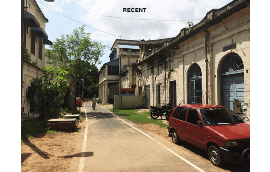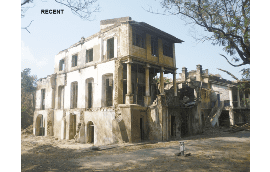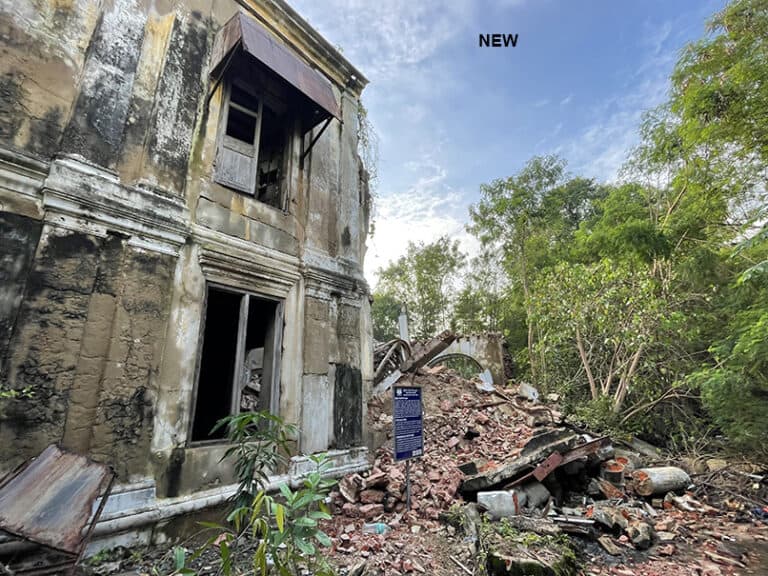Nothing fills me with greater sadness than to present you with this visual record of how a heritage street has declined to ruin. My oldest is a 1919 photograph of St Thomas’ Street in Fort St George – you see a long line of buildings on the left, each fronted by a verandah, thereby indicating that the street retained its residential character of buildings even then. True they were all offices, but the structures remained.
My Old is a sketch of the same street from 1945, done by Ismena Warren for Lt. Col. D.M. Reid’s book, The Story of Fort St George. This as can be seen is a recreation of how the street may have been in 1760, but it is clearly based on how the structures were in 1945. Incidentally, this is the first time we come across a reference to the street as Snob’s Alley.
Read more: Photos: Exploring Chennai’s forgotten heritage in Chintadripet
My Recent, taken in 2015 shows the buildings on the left all without their porticos. But what is clear is that Last House on Snob’s Alley (seen far left) is still standing, with its portico.
The other photo, as shown below, is a close up of the house itself as seen in 2015. This was the oldest residential structure standing in Fort St George.
Read more: From Victoria Public Hall to College of Fine Arts — who will save our heritage buildings?
Heritage street in ruins
My new, taken just two weeks ago shows Last House, reduced to rubble. Also to be noted is the forest of shrubbery that has grown all around, owing to complete lack of maintenance.
Of course, it is easy to say that this was a colonial structure that does not merit preservation but this neglect is contagious and one day we will find even those buildings “that merit preservation” meeting with the same fate if allowed to continue. It is just an instance of supreme callousness with no accountability.
[This story was first published on the author’s blog. It has been republished with permission. Read the original article here.]




